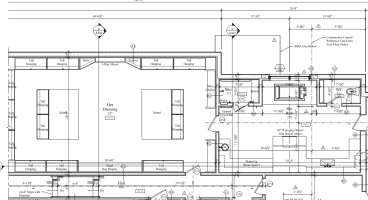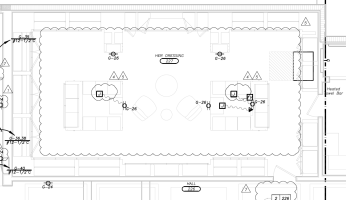I believe you have it backwards.
Let's take it from the top. If you say that a countertop receptacle is required for the island in the walk-in-closet, what NEC section specifies that requirement?
Looking through the NEC, the only section on countertop receptacles that I find that would apply to a dwelling unit outside of a bathroom is 210.52(C). That says (2017 text for easy of copying): "In kitchens, pantries, breakfast rooms, dining rooms, and similar areas of dwelling units, receptacle outlets for countertop and work surfaces shall be installed in accordance with 210.52(C)(1) through (C)(5)." So if you have the authority to interpret that, and you decide that a walk-in closet is similar to a pantry (I disagree), then absolutely 210.52(C) would require countertop receptacles (except not for the 2023 NEC, which somewhat controversially removed the requirement for island receptacles, in lieu of a provision for a future receptacle).
But then 210.52(B)(1) says (again 2017 text, emphasis mine) "In the kitchen, pantry, breakfast room, dining room, or similar area of a dwelling unit, the two or more 20-ampere
small-appliance branch circuits required by 210.11(C)(1)
shall serve all wall and floor receptacle outlets covered by 210.52(A),
all countertop outlets covered by 210.52(C), and receptacle outlets for refrigeration equipment." So if you are using 210.52(C) to require a walk-in closet island receptacle, then 210.52(B)(1) requires that receptacle to be on an SABC. Which IMO shows the incongruence of requiring a receptacle in the first place.
Of course, perhaps I've overlooked part of the NEC, and there is a different section that would require a receptacle for an island in a walk-in closet. If so, none of the above applies, and I look forward to hearing what section it is.
Cheers, Wayne


